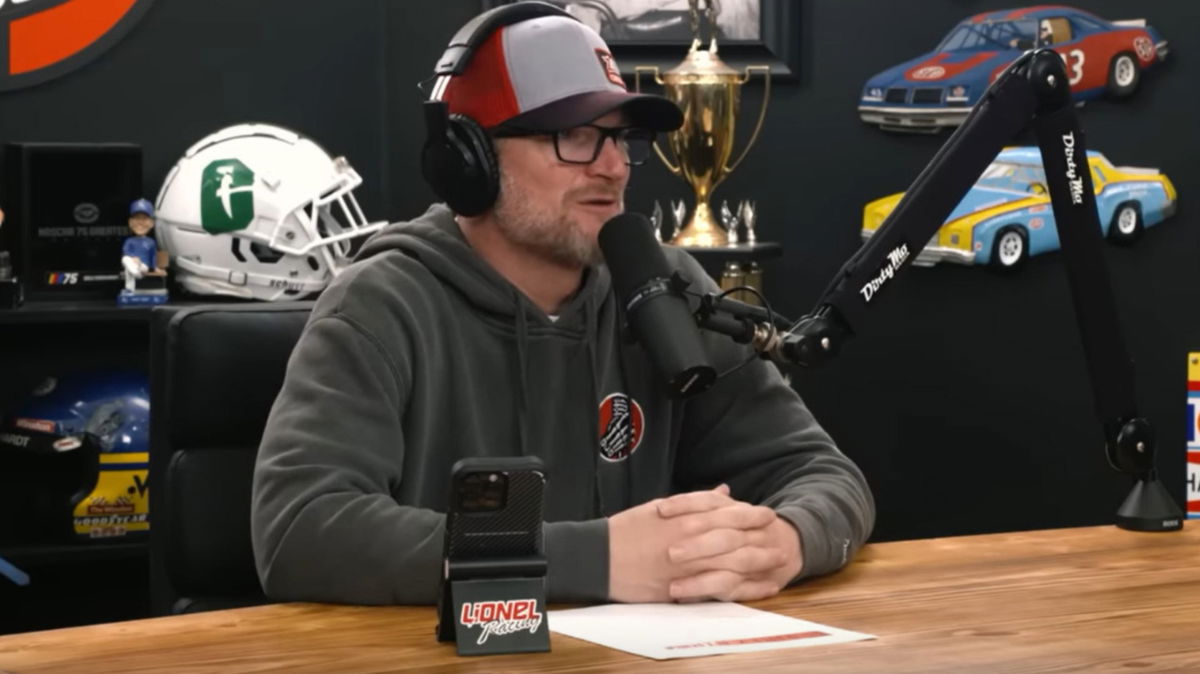

NASCAR is not a sport run by one company or organization. It runs on passion from many individuals and institutions who power it through enthusiasm, costs, and material. Do you know why Chase Elliott drove the Golden Napa 100 car in Texas? This was to honor one of NASCAR’s oldest sponsors, who completed 100 years of supporting the sport. Sponsorship is the lifeblood of the sport, fueling everything from team operations to the spectacle fans see on race day. Yet, the landscape is shifting these days. The total sponsorship revenue dropped nearly 16% from 2023 to 2024. Even powerhouse teams like Penske have seen sponsorship income plummet by nearly 40% in a single year.
Watch What’s Trending Now!
Despite blockbuster deals like Goodyear’s $125 million renewal and the Daytona 500’s record $388 million in sponsorship revenue, the sport faces growing uncertainty. As new sponsors enter and old ones reconsider their investments, the way NASCAR manages these relationships is under the microscope. And when a $36 billion global giant like Red Bull returns, albeit cautiously, questions about NASCAR’s approach to sponsorship management take center stage.
ADVERTISEMENT
Red Bull’s NASCAR past still haunts its cautious return
Red Bull’s first run in NASCAR wasn’t exactly smooth sailing. Back in 2006, the energy drink giant made a bold entrance into the sport, fielding their own Cup Series team. It lasted until 2011. The effort fizzled out, never delivering the kind of dominance Red Bull is known for in Formula 1. Dale Earnhardt Jr. still remembers the hype and the letdown.
“Red Bull’s in NASCAR some 13–15 years ago and they came in wide a– open,” Dale Jr. recalled. “We were all excited, we were like ‘Hell yeah, NASCAR is cooler, we got a Red Bull team.’” Red Bull’s presence was seen as a brand-elevating move for the sport. But did Junior not drive for another drink brand? Yes, but it is a sport at the end of the day! Saying it out loud, the Pied Piper said, “While we wanted to kick their ass on the racetrack, we wanted the Red Bull brand to succeed in our sport and for a lot of reasons that did not happen.” Despite high hopes, Red Bull’s full-team effort fizzled out after just two wins and ten poles in 284 Cup starts. Fans watched one of the most iconic brands quietly disappear. Now, Red Bull is back! But with far more caution.
ADVERTISEMENT
ADVERTISEMENT
“They’re kind of dipping their toe in the water instead of just diving into the deep end,” Dale Jr. said on his podcast. But why is Red Bull not going all-in on the sport? It’s because their branding strategy is different from traditional NASCAR sponsors. “They’re coming in with SVG, Connor Zilich, so they’ll be like on cars here and there helping these, they’re really more behind the athlete themselves than actually owning the entire property of the race team,” Dale Jr. pointed out. And now, the mystery of Red Bull not funding an entire team makes sense. But what could be the reason for such a cautious approach?
Dale Jr. suggests mismanagement from NASCAR’s side played a role in Red Bull’s original exit. Dale Jr.’s tone carried both frustration and a hint of regret. Red Bull’s exit was driven by a mix of poor on-track results, lack of return on investment, and a disconnect with NASCAR’s core audience. The team struggled with driver choices, inconsistent performance, and didn’t adapt to NASCAR’s unique culture. Dale Jr. suggests NASCAR failed to fully support and integrate Red Bull, leading to frustration and an abrupt departure.
For now, Red Bull’s watching from the sidelines, supporting their talent and evaluating their long-term commitment. And NASCAR? They’re left hoping history doesn’t repeat itself. Will NASCAR finally prove it can be a reliable platform for global giants, or will caution win over conviction once more?
ADVERTISEMENT
NASCAR opens the door to new sponsors and manufacturers
NASCAR’s challenges with major sponsors like Red Bull highlight a broader shift in the sport’s commercial landscape. As iconic brands reconsider their investments, NASCAR is being forced to rethink how it attracts and retains big-name partners. This uncertainty is amplified by the upcoming exit of Xfinity as the secondary series’ title sponsor in 2026, leaving a major gap to fill and signaling a new era for sponsorships.
The sponsorship shakeup doesn’t end there. Longtime fuel partner Sunoco’s contract is set to expire after 2025. However, no new deal has been finalized, potentially leaving a $10 million hole in NASCAR’s sponsorship revenue. Geico has already stepped down as a premier partner, and other teams are scrambling to replace departing sponsors like FedEx and Mavis Tires. Denny Hamlin summed up the mood, saying, “Sponsorship [is] hard to buy, and it’s clear that sponsorship dollars aren’t flowing like they used to.”
ADVERTISEMENT
This evolving landscape means teams are adapting to more fragmented sponsorships, with multiple brands sharing space on cars and haulers. NASCAR’s heavy reliance on sponsorship revenue-up to 80% for some teams-makes these changes especially impactful. The economic model, once stable thanks to long-term deals, now faces razor-thin margins and increased competition for every dollar.
Against this backdrop, NASCAR is actively seeking new sponsors and manufacturers for 2026 and beyond. They are hoping to diversify their partnerships and secure the sport’s future. This includes Red Bull (Trackhouse Racing), PPG Paints (Wood Brothers), Aaron’s (Front Row Motorsports), Robinhood (23XI Racing), Telcel (Trackhouse), Rinnai, and Lucas Oil (RCR). The series is also in talks with Dodge, Honda, and Hyundai about joining Chevrolet, Ford, and Toyota as manufacturers.
The next era will depend on whether NASCAR can successfully court new brands and adapt to a rapidly changing sponsorship environment.
ADVERTISEMENT
ADVERTISEMENT
ADVERTISEMENT

